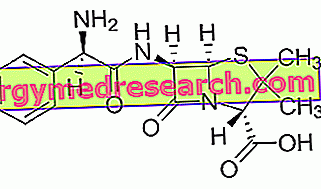Genetics is the hand of an artist who has already painted your image on a canvas, without asking any opinion.
I mean that everything is already marked by your birth in the genetic make-up, height, beauty, performance etc.
Fitness is not exempt from this, in fact you can see genetics monsters like a great world champion or your training friend who, despite following a bad diet and training program, manages to be bigger and more defined than you doing everything with the maximum accuracy.
Logically your genetic potential can be known ONLY in retrospect, in practice you will never know it if you don't try to train hard.
Ok, we realized that we must be born lucky, otherwise it is better to stay at home, but what are these genetic characteristics?
We can summarize them in the following points:

b) Insertion of the muscles on the tendons: the muscle fibers are inserted through the tendons in the bones stabilizing and allowing the movement of the skeletal structure.
These tendons join the bones through proximal and distal insertions.
The former represent the point of attachment of the tendons on the most static bone sector and vary little.
The distals, instead, are inserted on the more mobile bone sector and can be very different from subject to subject. This is important because by increasing the distance between the insertions the lever arm will be larger, therefore it will exert a greater force giving a greater muscular mass.
c) Percentage of white and red fibers: our muscles consist essentially of two types of fibers: red or slow and white or fast.
red fibers Good resistance They are smaller than white ones Little over-manufactured They have a fast recovery | white fibers Poor resistance They are bigger than the reds Ipertrofizzabili They have a slower recovery |
The fast fibers contract 4 times faster than the slow ones and get tired even sooner.
They generate anaerobically energy (in the absence of oxygen), they are typical of bodybuilders, centometrists, weight throwers.
The red fibers contract and tire more slowly.
They generate aerobic energy (in the presence of oxygen), the most striking examples are the marathon runners, the cyclists.
Usually the muscles of the human body contain an average of 50% of both fibers.
They can, however, vary widely from subject to subject. So a person who has a higher percentage of white fibers will be more prone to muscle growth.
d) Accident predisposition also plays a fundamental role. In fact the marked susceptibility that some bodybuilders have at the ligamentous tendon level can make the difference.
Imagine for a moment a person who is endowed with good genetic potential to increase muscle volume but who often falls victim to injuries, he will never manage to reach the maximum that his body can offer him.
The picture is even more catastrophic for ectomorphs with joint problems.
e) Hormonal levels: there are different hormones that influence the increase in mass and strength.
We recall the testosterone, produced from 4 to 9 mg per day in humans and from 0.15 to 0.4 mg per day in women.
A small difference in its production can give substantial mass gains. In fact, one person can produce 4 mg and another 8 mg.
So, we can also talk about luck, we need to be born with good genetics to have good results, but do not suffer, even those with unfavorable genetics may have discrete results as long as they follow the strict rules of physiology.
See also: Genetics and sports



